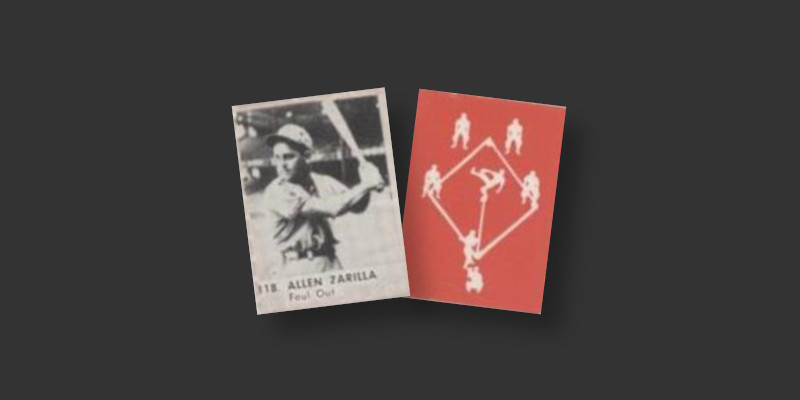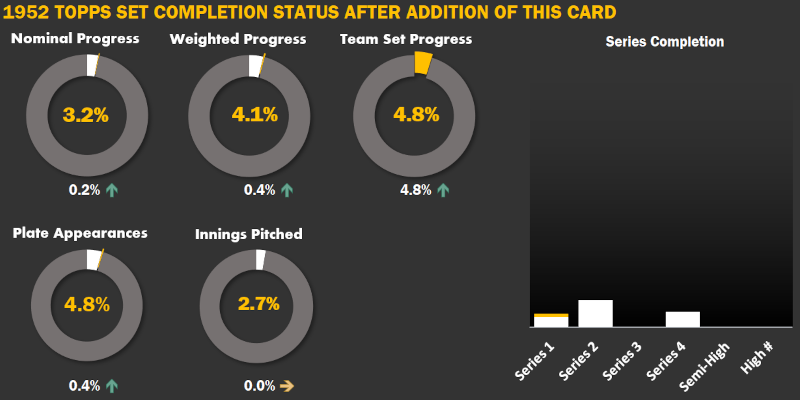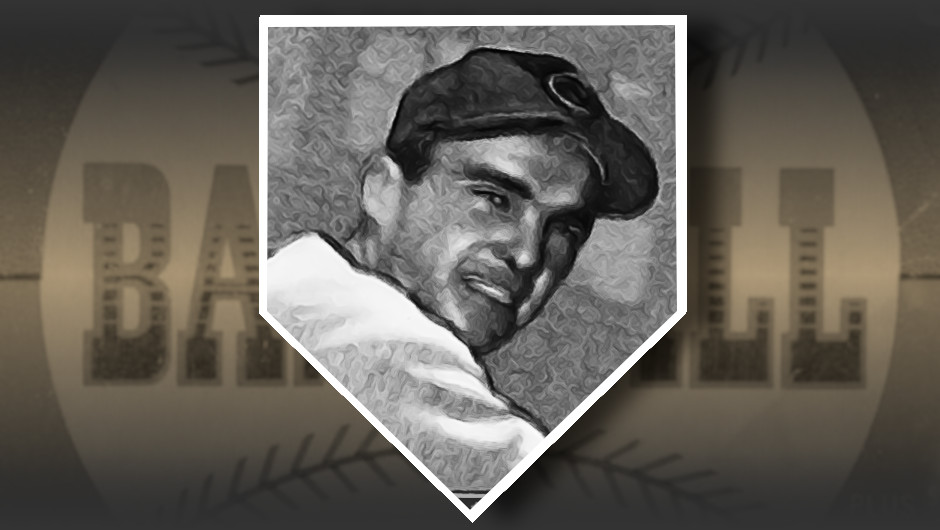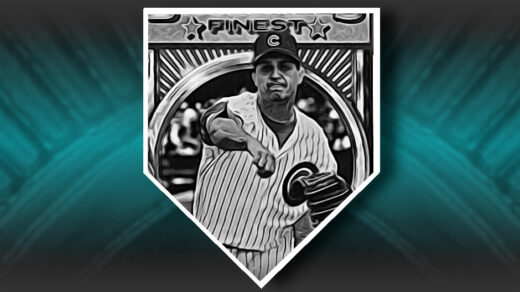Tom Owens’ fantastic blog Baseball By The Letters has a great anecdote about Zeke Zarilla. Zarilla was a frequent guest signer at Hawaiian sports card shows and happened upon a group of collectors looking at a mint condition example of his 1952 Topps card. He asked how much more collectors would want it if he were to sign it, at which time he was informed that his signature would likely devalue such a pristine card. Owens writes that he isn’t sure if Zarilla ever fully believed this and goes on to explain how much he loved talking baseball and signing for fans. This brief collecting story inspired me to look for a signed Zarilla card for my 1952 Topps set, resulting in the example shown below.
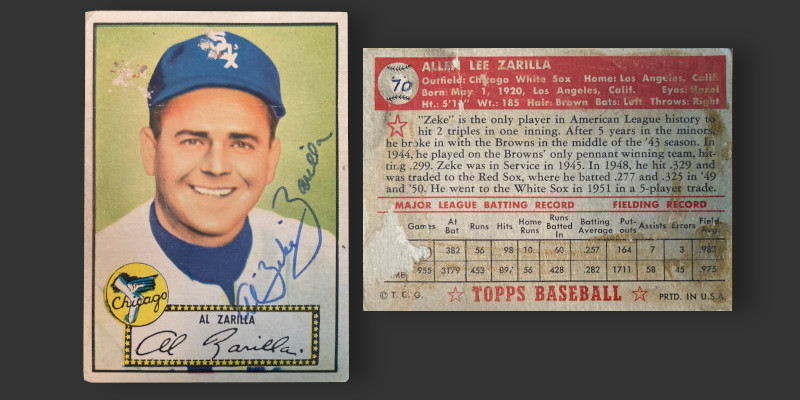
Zeke was first discovered by the St. Louis Browns in 1938 but didn’t get too much playing time with the Browns until the end of his WW2 service. Nicknamed “Zeke” because his bowlegged running style reminded teammates of a cowboy, he was the prototypical uninspiring player that frequently formed the core of St. Louis’ second favorite team. This changed after Hall of Famers Earle Combs and Ralph Kiner helped change his hitting mechanics. Following their advice he batted .329 in 1948 and .325 in 1950. These two seasons bookended the most productive portion of his career. Zarilla soon found himself bouncing between teams looking for a return to his 1948/1950 form. In 1952 alone he played for the White Sox, Browns, and Red Sox. Had he played for the Reds he would have covered every color-themed team in the sport.
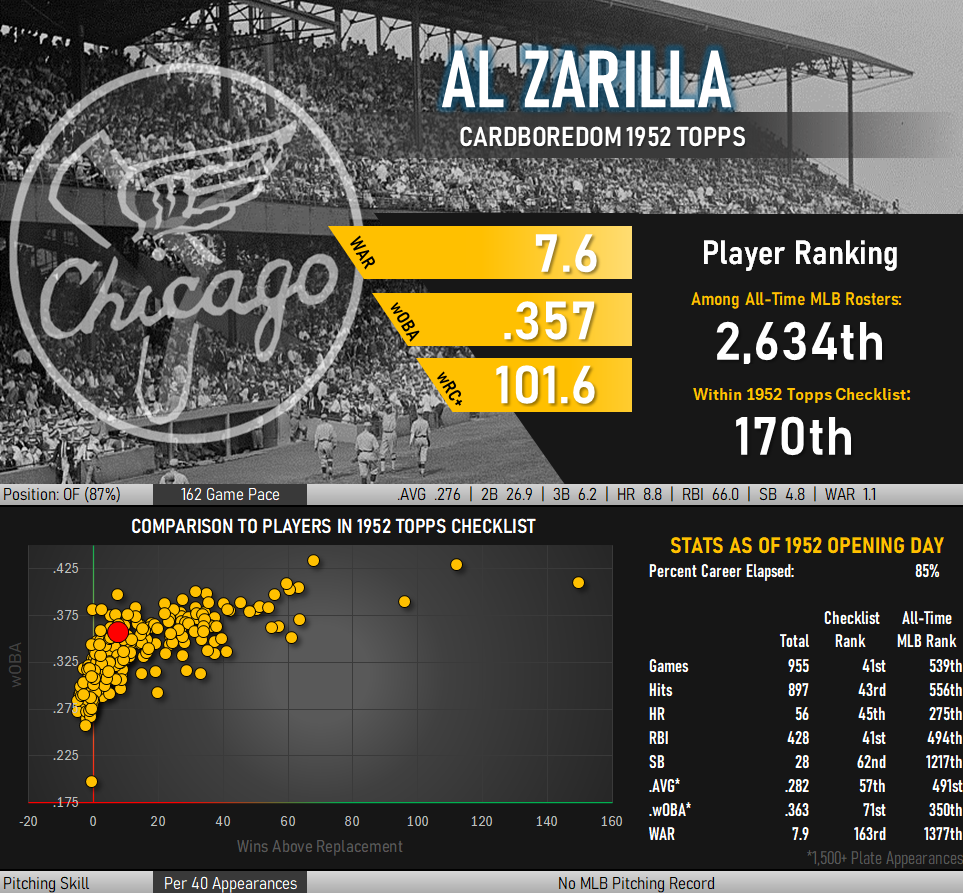
A Fun Zarilla Card
Zarilla must have made an impression on those that saw him play, whether it was from a couple seasons of All-Star caliber hitting or the goofy image he presented while running the bases. In 1950 he was one of 120 baseball players who appeared in a game similar to that of Topps’ 1951 debut. While I have not located the name of the manufacturer of these items they have been long cataloged by collectors as the R423 set.
These tiny “cards” (less than 1″ all around) were issued in strips of 13 that were to be cut apart by hand. Players of the game would shuffle the resulting individual players and deal face down. Players would then turn their stack over one card at a time to reveal a baseball player and resulting game action. Zarilla’s card, which identifies him as “Allen Zarilla,” generates a foul out.
